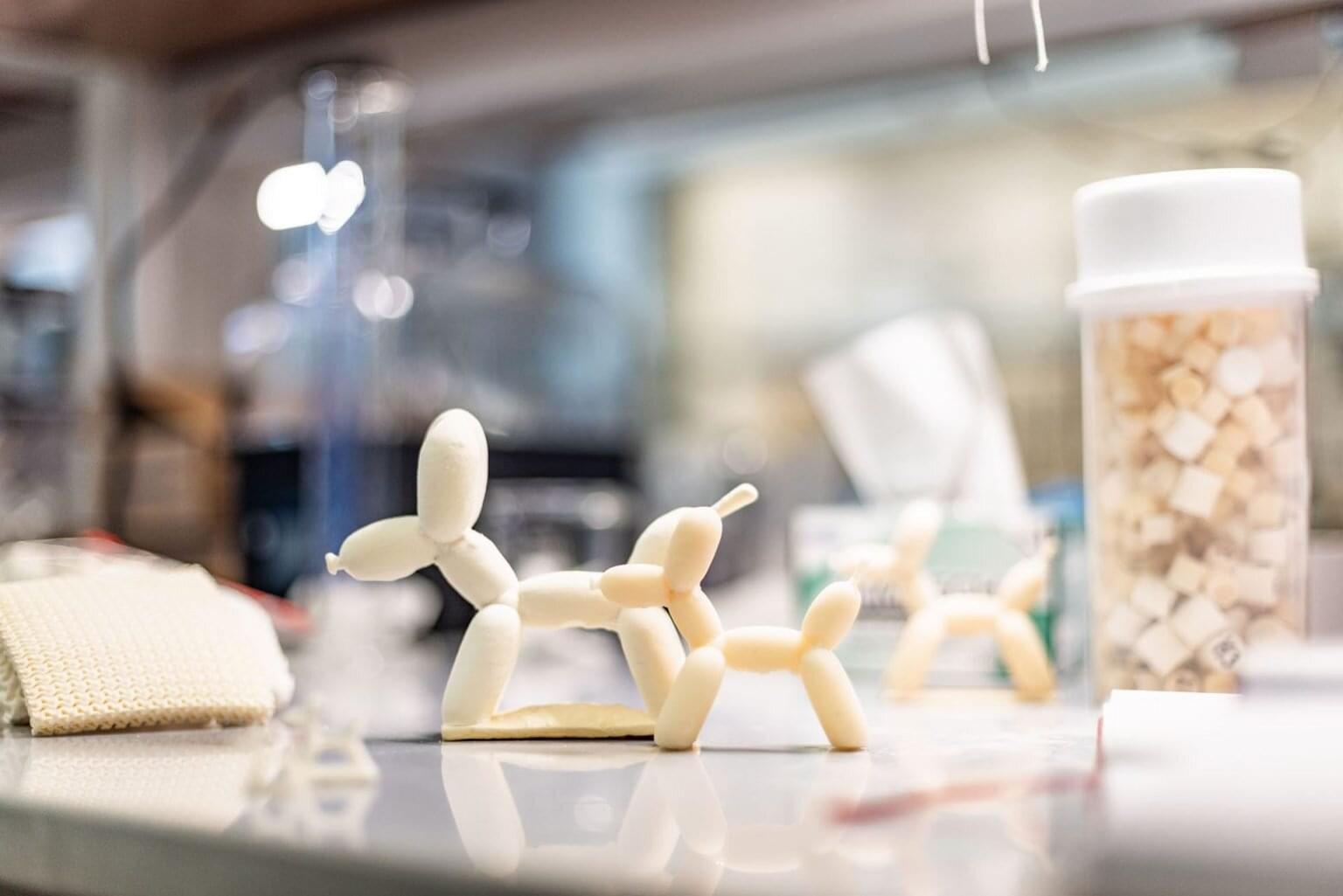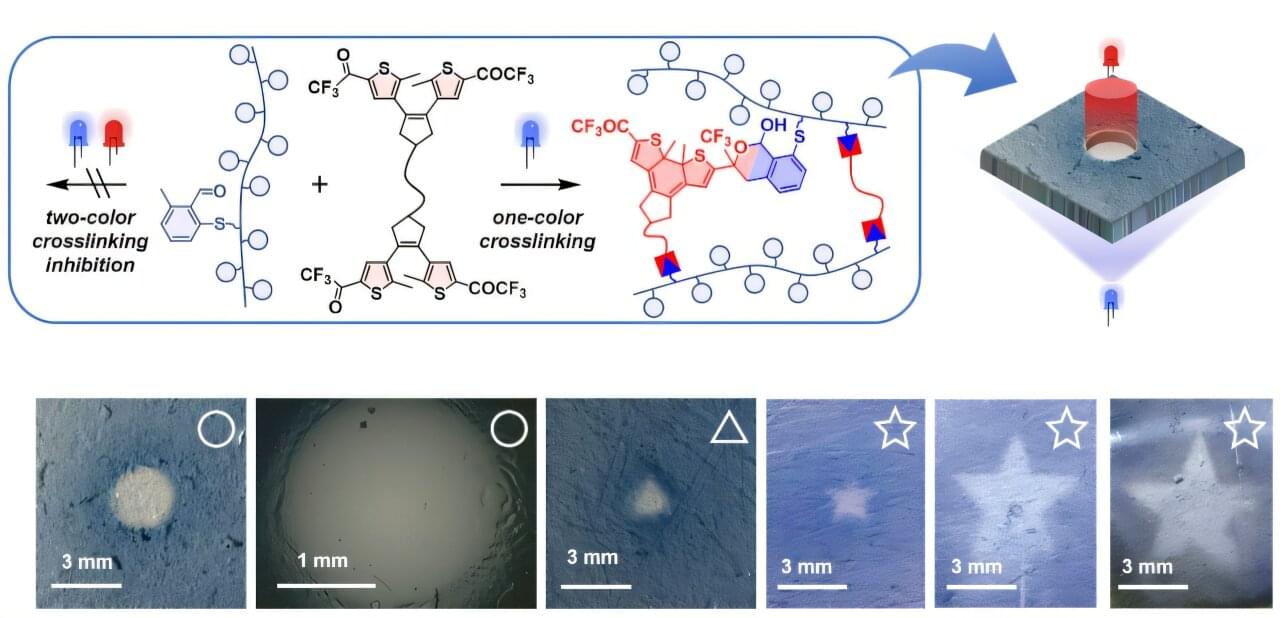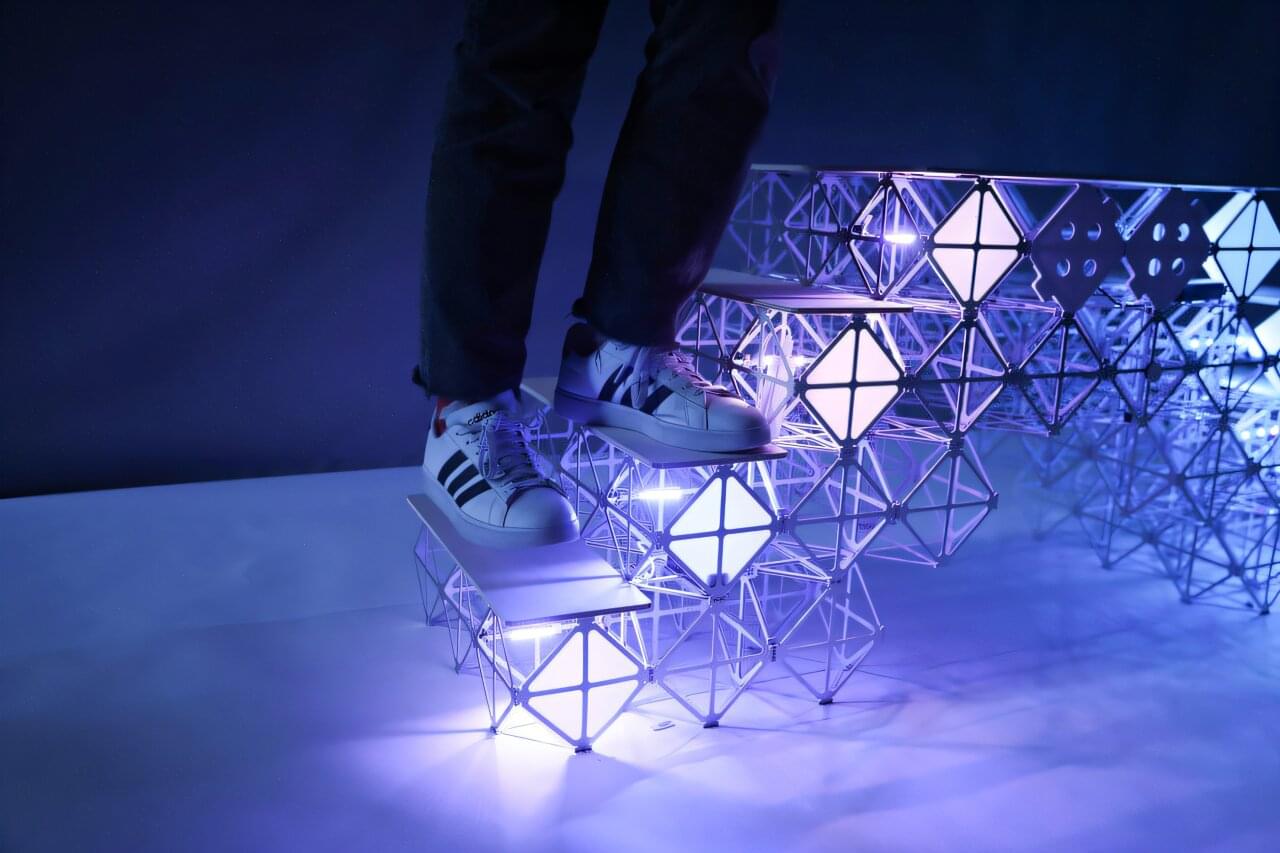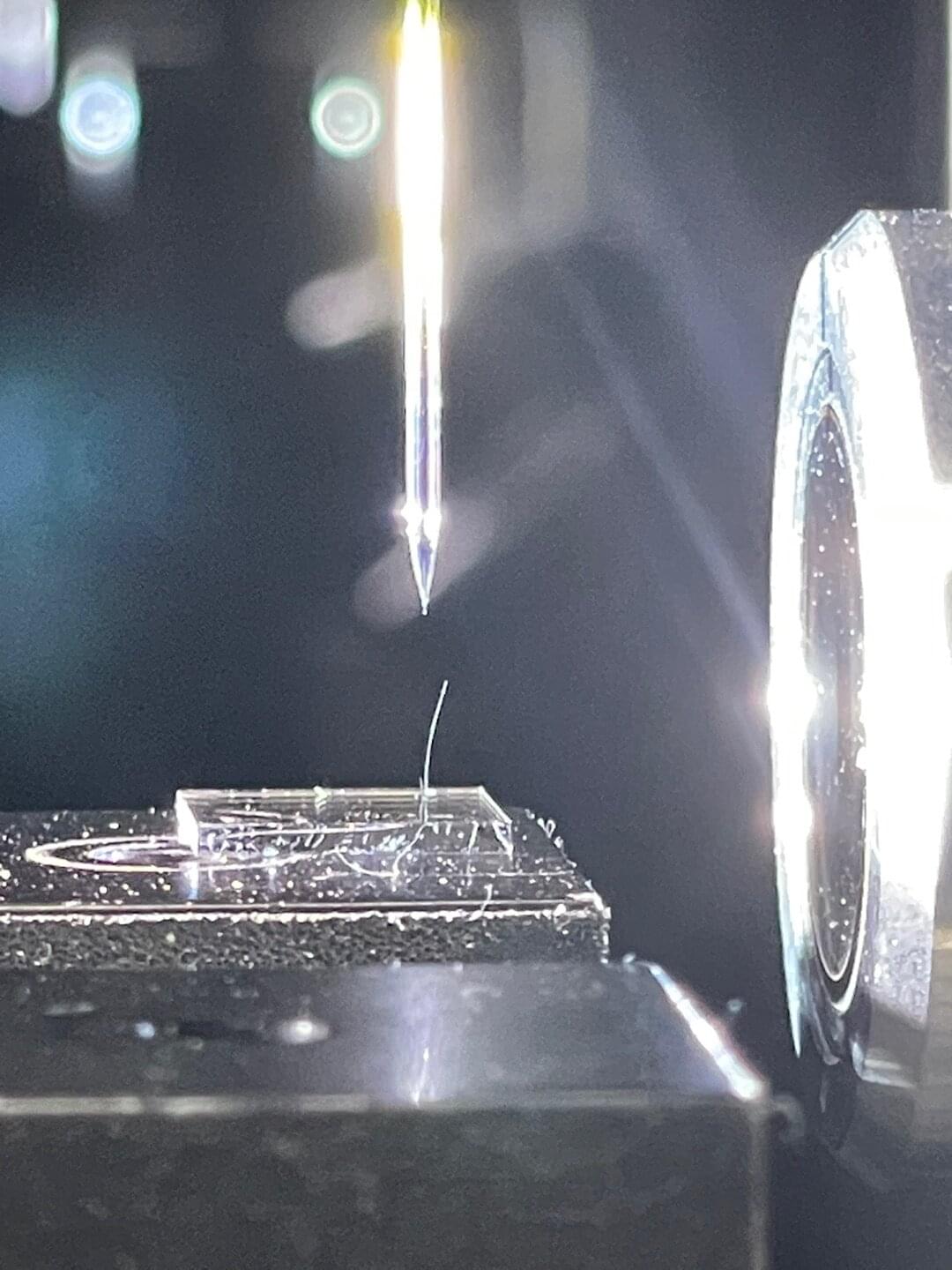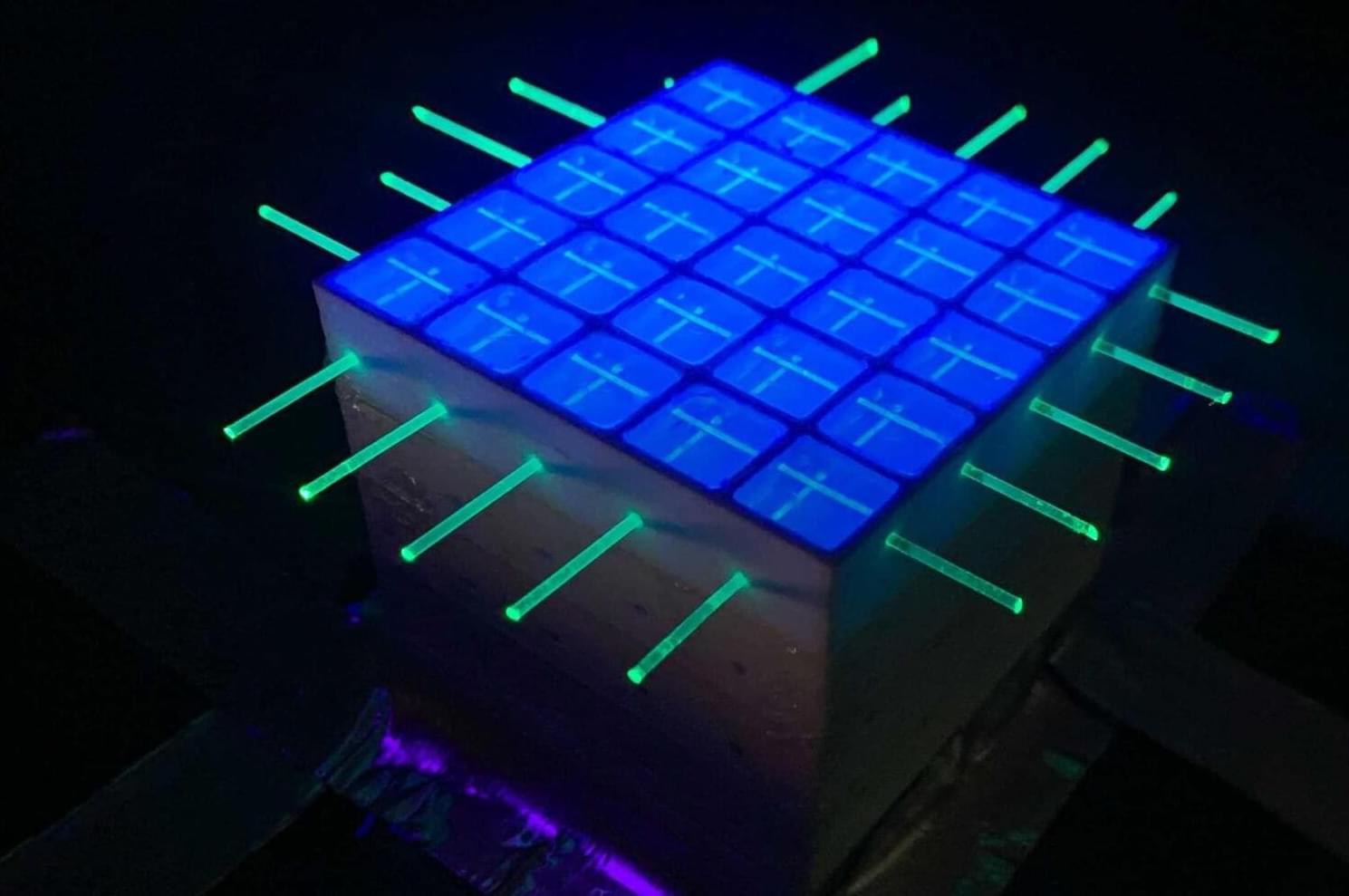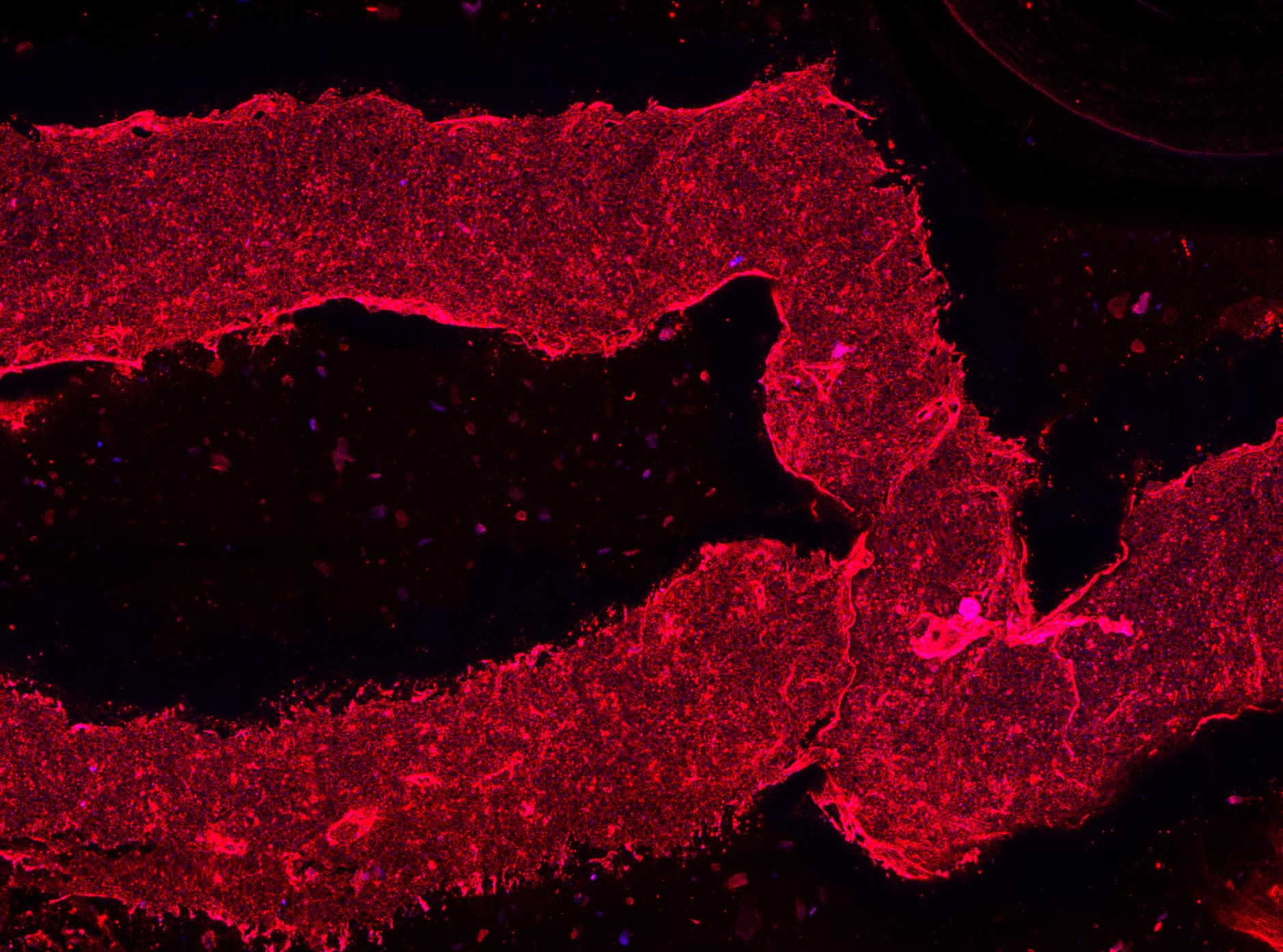From seat cushions to mattresses to insulation, foam is everywhere—even if we don’t always see it. Now, researchers at The University of Texas at Dallas have fused chemistry with technology to create a 3D-printed foam that is more durable and more recyclable than the polymer foam found in many everyday products.
The research, published in RSC Applied Polymers, focused on creating a sturdy but lightweight foam that could be 3D-printed, a method that is still largely unexplored in commercial manufacturing, said the study’s co-lead author, UT Dallas doctoral student Rebecca Johnson BS’20.
“This is probably the longest project I’ve ever done,” said Johnson, who plans to complete her Ph.D. in chemistry in May. “From start to finish, it was a little over two years. A lot of it was trying to get the polymer formulation correct to be compatible with the 3D printer.”
